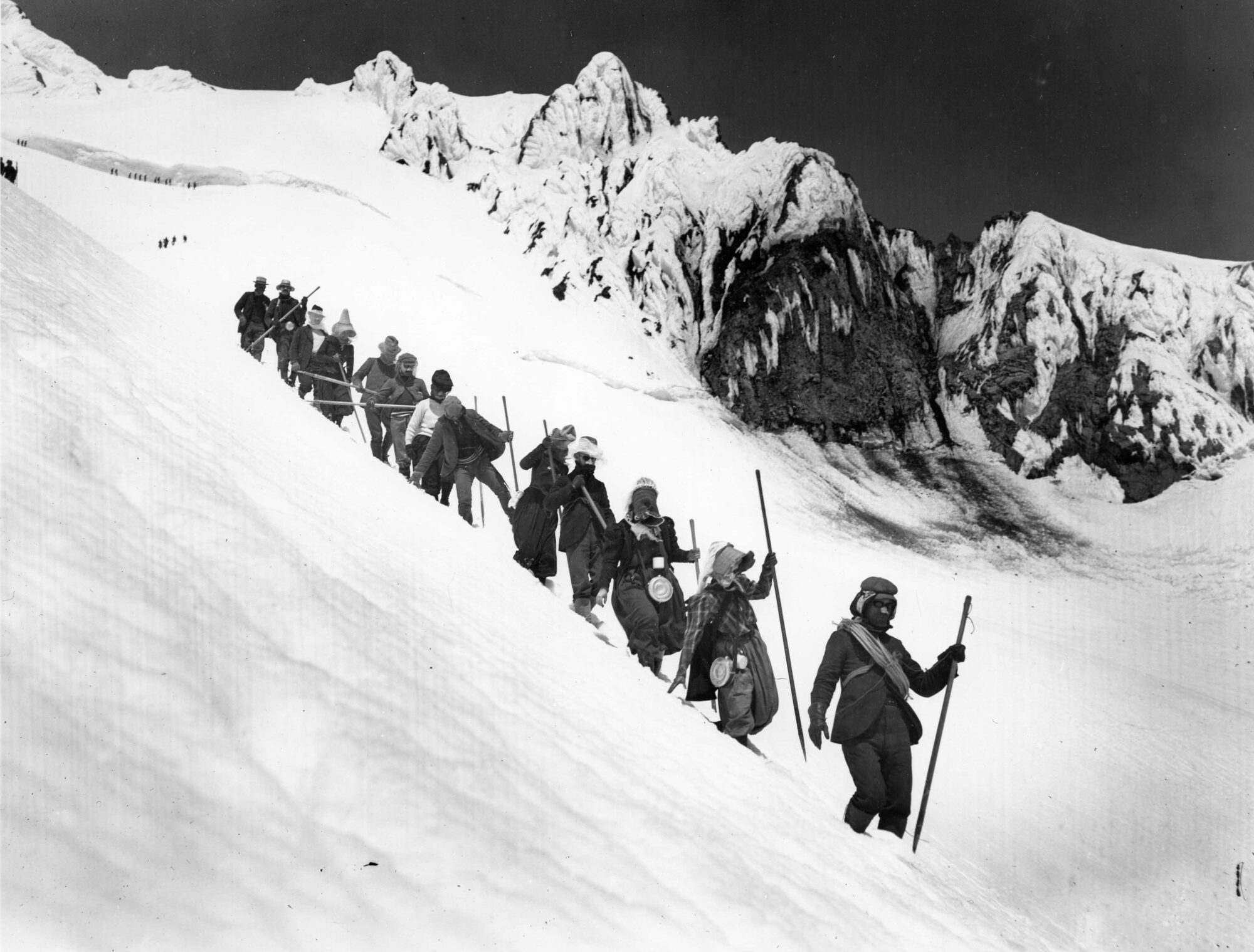
by Jacob Lippincott, Adventurous Young Mazamas
Oregon is typically not a state for fair weather hikers. In the summer expect to contend with heat, long dry spells, and skies filled with wild-fire smoke. In the winter, you’ll find cold temperatures, copious amounts of rain at lower elevations or many feet of snow at higher elevations. When the few nice weeks of fall give way to winter, people who want to continue enjoying one of our local trails often turn to snowshoes.
It is thought that snowshoes were first used around 4000 BC in Central Asia. People in snowy environments used them not for recreation at first, but for travelling and hunting. Snowshoes at this time did not look much like the ones we see today but were made from teardrop shaped planks of wood with a binding to attach to the foot. It wasn’t until they were brought to North America, by people crossing over the Bering Sea Land Bridge that they started to take on a more recognizable form.
The Indigenous peoples of the Huron and Cree tribes are credited with modernizing snowshoes, replacing planks with webbing and a frame around the outside. As they were used more extensively, their form changed to meet the demands of conditions specific to that region. For example, snowshoes found in Alaska tended to be longer and skinnier, more suited for long trips in open country with deep snow. In contrast, the “bear paw” snowshoe, oval in shape with no tail, was great for navigating through dense woods and hilly areas. Today’s snowshoes resemble these older versions in shape and serve similar function, but are made with newer materials like aluminum and plastic, allowing them to be lighter and more durable.
For winter travel on trails and snowy plains, it is hard to beat snowshoes for their effectiveness and ease of use. While they may not provide the downhill speed of touring skis or the efficiency of cross-country skis, they require less training and less financial investment. If you can hike, you can snowshoe. That being said you will find that snowshoeing through deep snow is tiring, and usually slower than hiking.

Often, you find fewer people braving the elements so snowshoeing, even on a trail that is popular in the summer, can feel like you are deep in the backcountry. Just remember that snowshoeing or other forms of winter recreation come with their own set of challenges. Navigation can be harder, as even familiar trails can look vastly different under a few feet of snow and storms easily remove evidence of yesterday’s bootpack. Be prepared for cold temperatures in the morning and potential warming throughout the day, dress in layers. Finally, the sun goes down early in winter, start early and be back before dark. Now is not the season to stay overnight in the woods.
I often say that I don’t like to snowshoe, that I would rather ski if I am spending time outside this time of year. But, writing this has made me reconsider that position. Yes, snowshoeing is often more tiring and slower than hiking and I want to get to the summit or back to the car to get warm. But when I remember to stop and marvel at the forest around me and soak in the quiet splendor, I am once again reminded how lucky I am to live in the Pacific Northwest. The dark green stands of evergreens, when covered with snow, are what comes to my mind when I think about the mountains here and trails become more beautiful during the winter. Moving through the woods in the cold, with tepid winter sun filtering through the trees and heavy snow-laden boughs gently swaying in the wind above provide for a wonderful, unique experience. Winter also provides a stillness to the outdoors that can be hard to find today. Honestly, I think about how lucky I am to live here almost every time I am outside in Oregon but it hits differently this time of year. And when on one of these magical winter hikes, thanks to snowshoes, I didn’t posthole every ten feet for the last five miles.
If you would like to join the Mazamas for a snowshoe, keep an eye on the calendar this winter season. The Adventurous Young Mazamas is hosting our Winter Weekend the weekend of February 14–16. There will be snowshoeing events for everyone regardless of age or experience level, join us!

